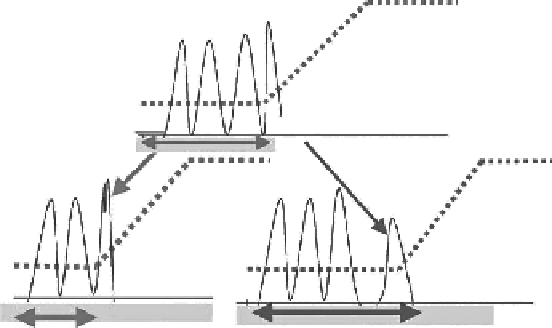Chemistry Reference
In-Depth Information
8.6.1 I
nStrument
c
onSIderAtIonS
Many adverse effects encountered during AMT can be traced to the instrument.
Injectors differ in design and cycle time, detectors can have different filters, time
constants, wavelength accuracy, detector cell volumes, and parameters such as reso-
lution and wavelength range (if appropriate), and HPLC pumps deliver solvents in
different ways (e.g., low- versus high-pressure mixing systems). One of the more sig-
nificant issues involves gradient separations in much more common use today than
in times past. When transferring gradient methods between different systems, gradi-
ent delay volume must be taken into account, otherwise the situation illustrated in
Figure 8.1 can cause significant problems. The top chromatogram in Figure 8.1 is a
representation of the original method. Note that the fourth peak is eluted at the start
of the gradient, the others in the isocratic segment. The bottom-left chromatogram
could result upon transferring the method to a system with a smaller gradient delay
volume. Due to the smaller volume, the gradient reaches the column before the iso-
cratic elution of the third peak, compressing it into the fourth peak. In contrast, the
bottom-right chromatogram could result upon transferring the method to a system
with a larger gradient delay volume, effectively resulting in a longer isocratic hold
time. The first three peaks still are eluted as in the original system; the fourth peak,
however, is now eluted later. Because LC systems on the market today can differ by
as much as 100 µL to over 1 mL in system volume, it is often useful to build in an
isocratic hold at the beginning of the gradient for delay volume compensation. If the
target system has a smaller system volume, an additional isocratic hold is added at
the beginning of the gradient. If the target system has a larger system volume, no
exact compensation is possible, nor is it necessarily needed. One word of caution:
there are many ways to measure system gradient delay volume. Methods involv-
ing linear gradients are preferred because step gradients will not take into account
proportioning valve volume in low-pressure systems or actual chromatographic
Original
System with larger
volume
System with smaller
volume
FIgure 8.1
The effect of different gradient delay volumes on chromatography.

